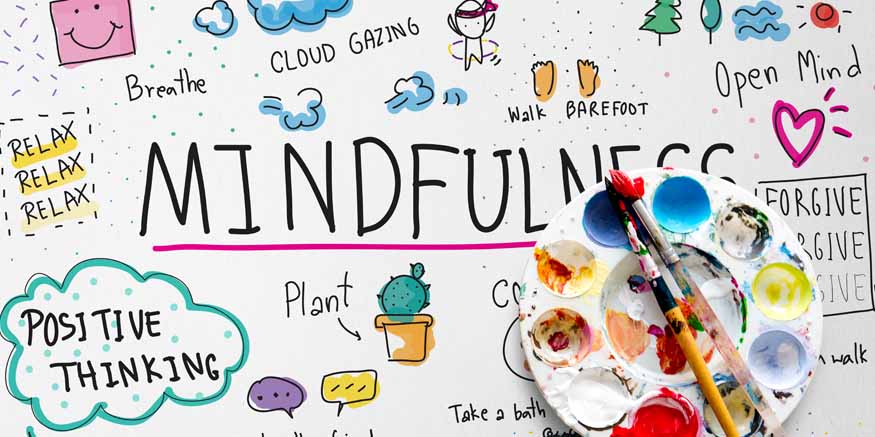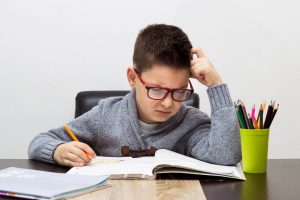Unlocking Inner Peace: How Mindfulness in Education Transforms Young Learners

We live in a world today that is hectic and chaotic. The need for clarity of thought and emotional resilience has never been greater, especially among young learners. Amidst the chaos of academic pressures and social dynamics, Mindfulness in education helps young children to be more self-aware. It helps them develop the ability to stay calm in overwhelming situations, and find balance in their daily lives. In this blog, we delve into the profound impact that mindfulness programs in schools can have on young learners, the role of curriculum development in education, and how integrating mindfulness practices can revolutionise learning environments for students.
Understanding Mindfulness in Education
The practice of Mindfulness involves purposefully paying attention to what is happening in the present moment without judgement. When applied within educational settings, mindfulness in education fosters a learning atmosphere where students can thrive both academically and emotionally.
The incorporation of mindfulness programs in schools has been linked to several benefits for students:
- Enhanced Focus and Concentration: Mindfulness helps students stay focused on their tasks, reducing distractions and improving academic performance.
- Emotional Regulation: Through mindfulness practices, students learn to manage their emotions better, leading to reduced anxiety and stress levels.
- Improved Social Skills: Mindfulness encourages empathy and compassion, enhancing students’ ability to build healthy relationships with their peers.
- Greater Self-awareness: Students become more attuned to their thoughts and feelings, fostering a deeper understanding of themselves and their reactions.
Mindfulness Programs in Schools
Implementing mindfulness programs in schools involves structured activities and exercises designed to help students practise mindfulness regularly. These programs can be seamlessly integrated into the school day, ensuring that students receive consistent exposure to mindfulness practices. Some of these might include:
- Mindful Breathing Exercises: Simple breathing techniques that help students centre their thoughts and calm their minds.
- Guided Meditation: Teachers lead students through short meditation sessions to promote relaxation and mental clarity.
- Mindful Movement: Incorporating yoga or stretching exercises into the daily routine to help students connect with their bodies and release tension.
- Mindful Listening: Activities that encourage students to listen attentively to sounds around them, fostering presence of mind and attentiveness.
Curriculum Development in Education
For mindfulness in education to be effective, it needs to be made a part of the school curriculum. This requires thoughtful curriculum development in education that prioritises students’ mental and emotional well-being along with academic achievements.
Steps to Integrate Mindfulness into the Curriculum:
- Teacher Training: Educators must be trained in mindfulness techniques to guide their students effectively.
- Lesson Planning: Mindfulness activities should be included in lesson plans across subjects, ensuring that mindfulness becomes a regular part of the learning process.
- Assessment and Feedback: Regular assessments can help track the impact of mindfulness practices on students’ well-being and academic performance, providing valuable feedback for continuous improvement.
- Parental Involvement: Engaging parents in mindfulness practices at home can reinforce these principles in the most important environment that a child inhabits.
Mindfulness Practices for Young Learners
Young learners can greatly benefit from age-appropriate mindfulness practices that are both engaging and effective. These practices not only help in academic settings but also equip students with lifelong skills for managing stress and emotions.
- Mindful Storytelling: Incorporating mindfulness themes into stories can captivate young learners and teach valuable lessons in a relatable way.
- Sensory Activities: Activities that involve the five senses, such as mindful eating or nature walks, can help young learners stay grounded and present in the moment.
- Mindful Art Projects: Creative activities like drawing or colouring can be used as mindfulness exercises, allowing students to express themselves while practising focus and calmness.
- Gratitude Practices: Encouraging students to reflect on things they are grateful for can cultivate a positive mindset and enhance emotional resilience.
The Role of Educators and Parents
Educators and parents play a crucial role in the successful implementation of mindfulness in education. Their support and involvement are essential for creating a consistent and nurturing environment for students.
Educators as Role Models:
- Teachers can model mindfulness behaviours, demonstrating calmness and presence in their interactions with students.
- Establishing a classroom atmosphere that promotes mindfulness can help create an environment for children to learn by experience. This includes designated quiet spaces, mindfulness corners, and routine mindfulness activities.
- Staying updated on the latest mindfulness techniques and best practices through continuous learning and development will help educators create more meaningful experiences for students.
Parents as Sustainers of Mindfulness:
- Parents can practise mindfulness with their children, reinforcing the techniques learned at school.
- Actively participate in school-organised workshops, providing feedback to encourage and strengthen the school’s mindfulness programs.
- Nurture activities at home that are based on principles of mindfulness, and support overall well-being by ensuring adequate sleep, healthy eating, and regular physical exercise for their children.
The journey towards incorporating mindfulness in education is a vital step towards fostering a balanced and healthy learning environment. Through mindful practices, curriculum development, and the combined efforts of educators and parents, young learners can achieve emotional well-being along with greater academic success . As we embrace mindfulness programs in schools, we pave the way for a future generation that is not only academically proficient but also emotionally intelligent and resilient. Billabong High International School is committed to nurturing the holistic development of students. Our mindfulness programs in schools are designed to equip young learners with the skills they need to navigate life’s challenges with resilience and grace. Visit our website to learn more about our curriculum, or contact our admissions office.




